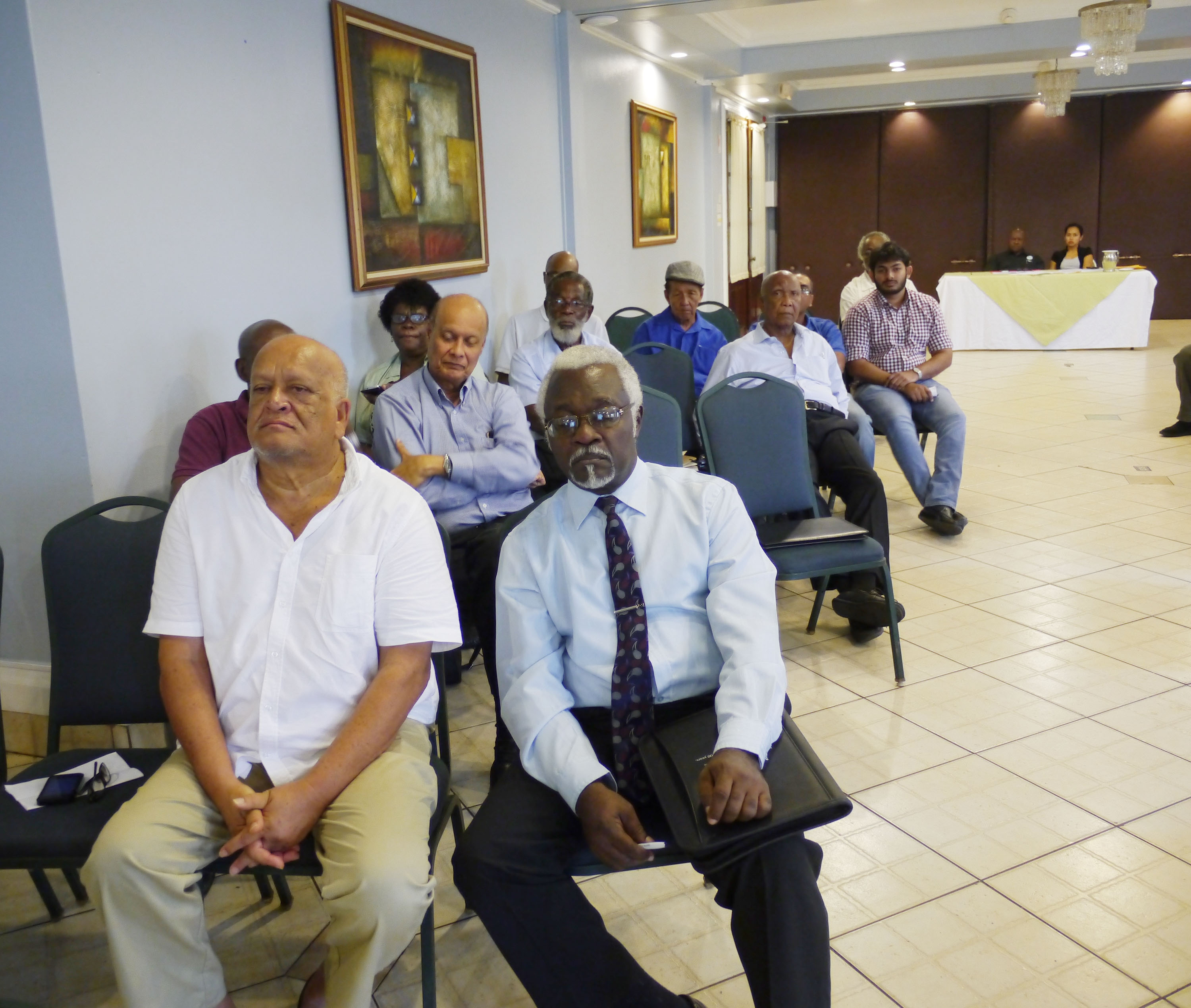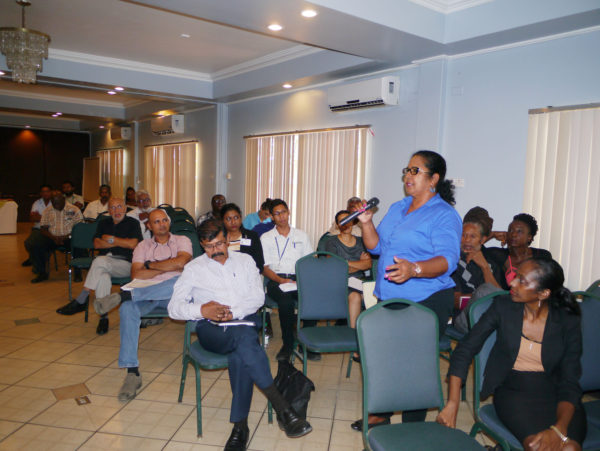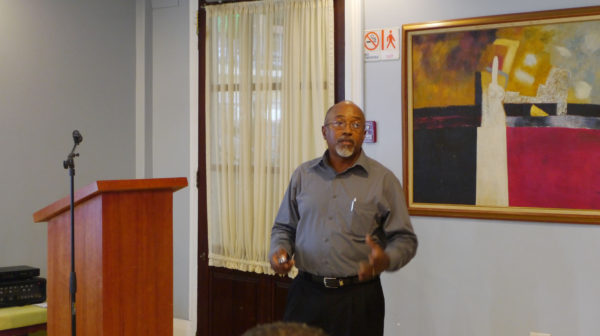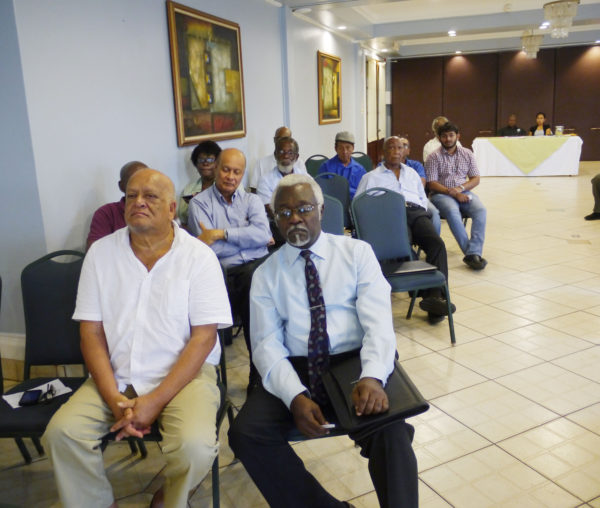Ahead of the opening session for the first ever Coconut Festival to be held in Guyana this evening, farmers/producers raised the issue about the supply of coconuts for their business and the state of old plantations.
At a pre-festival activity at the Grand Coastal Inn yesterday, as part of Coconut Awareness Week, they said the scarcity of coconuts, which is also as a result of most of it being exported to the Dominican Republic (DR), would cause the price to go up…”
While there has been a lot of hype surrounding the festival, there is a view in some quarters that it won’toffer up solutions for Guyanese stakeholders who face a problem of aged coconut plantations with diminishing yields. This problem has been spoken about for decades but there has been little focus on it.
Raymond Trotz, a producer and Chairman of the National Stakeholders Platform (NPS), told the businesspersons that to have improved production, they need to rehabilitate their cultivations.
The farmers were told to “feed those trees… they would respond to water and a little fertilizer. This method is being used in India” and has proven to be very effective.
One of the reasons for the trees not being able to produce to the full capacity is that they are “too old.”
The festival is expected to attract exhibitors from Suriname, Brazil, Mexico and India. There will also be a representative from the International Trade Centre (ITC) based in Switzerland as well as a representative from Barbados who would be doing a presentation on agro-tourism.
At the pre-festival activity, Trotz had presented the Roadmap for Coconut Industry Development in Guyana that contains the collaborative work done by the NSP and ITC with the Caribbean Agricultural Research and Extension Institute (CARDI) over the last 16 months.
He told Stabroek News that, “Work on the Roadmap has already begun in terms of building and mapping alliances for action among processors, producers, and support agencies to meet the requirements of market demand for selected coconut products.”
He said too that “in order to support this effort, at our last meeting held on September 21, 2016 a unanimous decision was taken to transform the NSP into a Coconut Development Board which would have the structure and function to effectively implement the plan.”
Businessman, Beni Sankar, who is the producer of the Guyana Ideal Life products, complimented Trotz on doing a very good job in presenting the road map, but was concerned about the scarcity of coconuts.
Trotz suggested that new plantations can be opened up, but noted that even so, coconut takes a while to grow and that the farmers/producers need to have a business plan.
He said they can have an inter-cropping pattern that allows them to meet their expenses until the coconut comes into production. He also said that they should “integrate vertically” to ensure they have a constant supply.
“The general principle is that you must own about 60% of what you need, in terms of cultivation… You can address the issue by improving local capacity by manufacturing and processing,” he said.
He also told the producers that they may have to form alliances with cluster groups that would supply coconuts to them.
Farmers were also advised to drive around to the cultivation areas and “buy coconuts from off the trees.”
Sankar also feels that by offering the farmers more money, it would help to prevent the exportation of coconuts.
A farmer/producer from the Pomeroon, Vilma Da Silva who is seen as a pioneer in the coconut industry said it is time that “we start taking responsibility for ourselves and stop looking at somebody else to make this happen.”
She turned to coconut production after suffering constant losses in cash crop farming.
Together with her husband, she invested in 30 acres of coconut because that crop can withstand any weather.
At the time, they did not have a vision that they would “reach this far.” With a lot of coconut on their hands, she suggested to her husband that they should bottle the coconut and said “lo and behold, it took the market.”
She said too that a few years ago she started exporting to Trinidad and at 5 am farmers would be at her door delivering coconuts.
She said that she never thought they could have exported four containers of coconut out of Pomeroon for the month.
Meanwhile, Trotz said that exportation to the DR would eventually be reduced because a consultant from ITC from there came to talk about value chain alliances and informed them that they have started to plant large acreages.
As such, in a few years, they would not need to come down to Guyana and that would leave the local producers with a lot of coconuts.
The Coconut Festival is a collaboration between the Ministry of Business – Department of Tourism – and the Ministry of Agriculture, with support from the ITC and CARDI. It is intended to re-educate Guyanese people about the diverse benefits of this super-fruit including the health and cosmetic benefits, the nutritional value, the decorative value of the shell, tree trunk, branches and fronds, as well as the numerous ways for up-cycle and down-cycle manufacturing.








